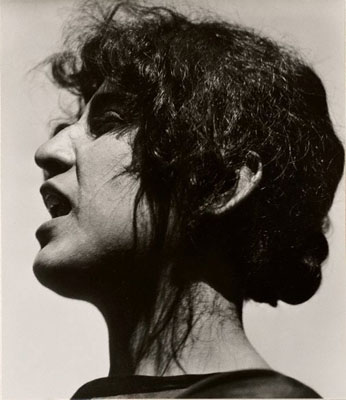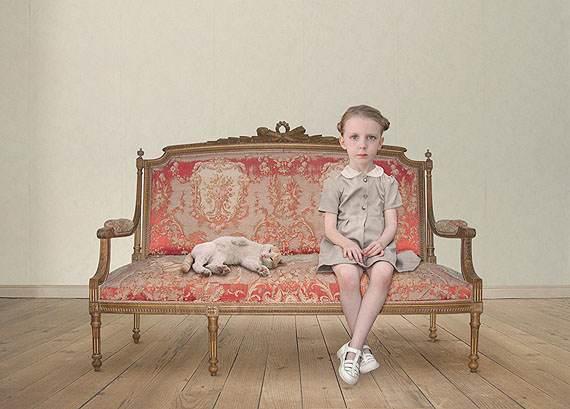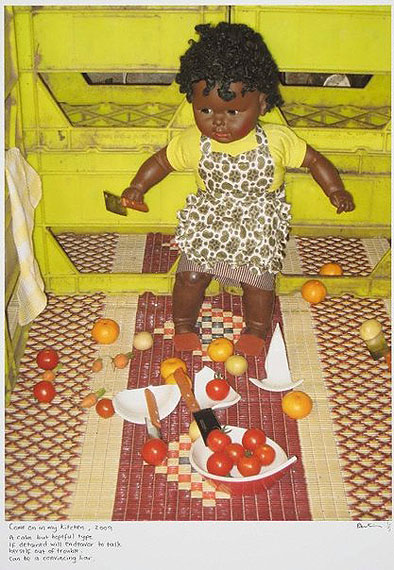
printed later gelatin silver photograph, 20.7 x 17.8 cm.
Gift of Patsy W. Asch 2000
© Centre for Creative Photography, Arizona Board of Regents.
What's in a face? aspects of portrait photography
Ben Cauchi » Olive Cotton » Destiny Deacon » Max Dupain » Paul Foelsche » Nan Goldin » Carol Jerrems » Loretta Lux » Man Ray » Darren Sylvester » Edward Weston » Iwao Yamawaki »
Exhibition: 24 Sep 2011 – 5 Feb 2012
The Art Gallery of New South Wales
Art Gallery Road, The Domain
NSW 2000 Sydney
+61 2-92251700
artmail@ag.nsw.gov.au
www.artgallery.nsw.gov.au
Thu-Tue 10-17 . Wed 10-21

The waiting girl 2006, Ilfochrome photograph, 38 x 53 cm.
Purchased with funds provided by the Photography Collection Benefactors Program 2007
© Loretta Lux/Bild-Kunst. Licensed by Viscopy, Sydney.
Spanning over a century, What’s in a face? aspects of portrait photography is an exhibition of 45 photographs from the Art Gallery of NSW collection. The exhibition focuses on crucial points in the history of photographic depictions of the human face ranging from studio portraiture in the late 19th century to contemporary practices today. Works by Australian photographers, such as Paul Foelsche, Olive Cotton, Max Dupain, Carol Jerrems, Destiny Deacon, Patrina Hicks, Darren Sylvester and others, are placed in an international context, represented by Man Ray, Edward Weston, Iwao Yamawaki, Nan Goldin, Ben Cauchi and Loretta Lux, amongst others. All portraits reveal something of the sitter, the photographer and also of us as viewers, but none reveal a whole and complete being. This is part of the enduring fascination with the photographic portrait which purports to be an exact likeness but operates more accurately as a metaphor for the self and how that self might exist in the world at a particular point in time. – Judy Annear, senior curator photographs, Art Gallery of NSW Using photography to depict the face and figure was initially a time-consuming and expensive business. However, the drive to document all things in the world, and rapid technological advances, meant that by the 1880s most people, willing or not and regardless of the photographer’s or their own desires, were documented in some way. Spurious 19th century ideas to do with what a face could represent exploded in the early 20th century when identity came to be seen as a psychological rather than social phenomenon. Theatricality and performing for the camera, which had existed in photography since its inception, also became much more evident in this period. In the post-WWII era representations of the face and the body quickly acquired a political and socially aware edge. More recently the face has tended to stand less as an expression of personal experience and more a statement that may signify a set of ideas, whether about the individual, the group or the society at large. Many of these highly constructed images acknowledge and play upon the problematics of the photographic portrait. A series of public programs and educational programs for all ages has been organised in conjunction with this exhibition.

Come on in my kitchen
2009
inkjet print from digital image on archival paper
80.0 x 60.0cm image; 105.0 x 81.0cm sheet
Purchased with funds provided by the Aboriginal Collection Benefactors' Group 2009
© Destiny Deacon. Licensed by Viscopy, Sydney

They return to you in song, 2001
Lambda print
100.0 x 100.0cm
Purchased with funds provided by the Photography Collection Benefactors' Program 2002
© Darren Sylvester